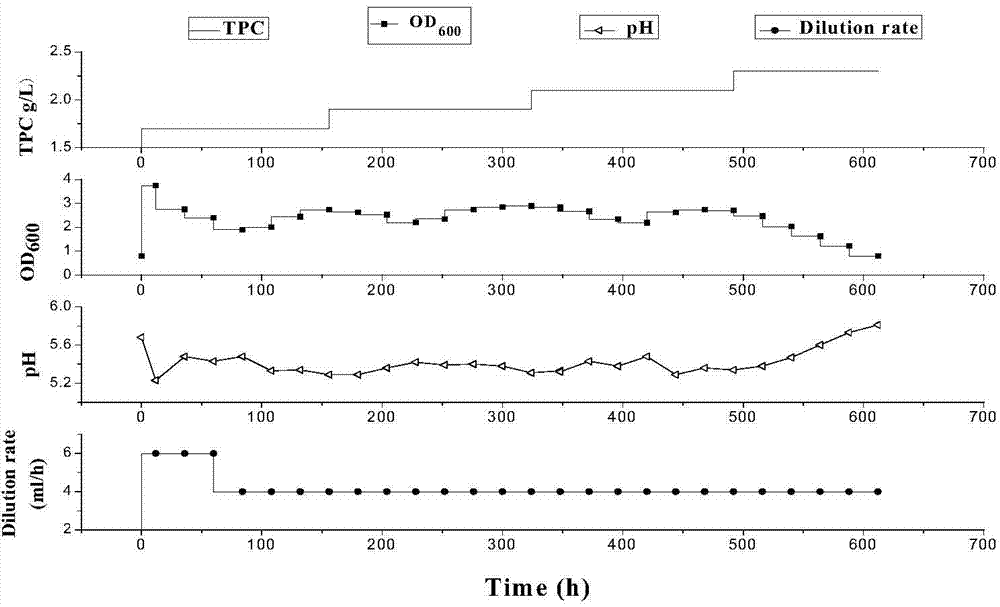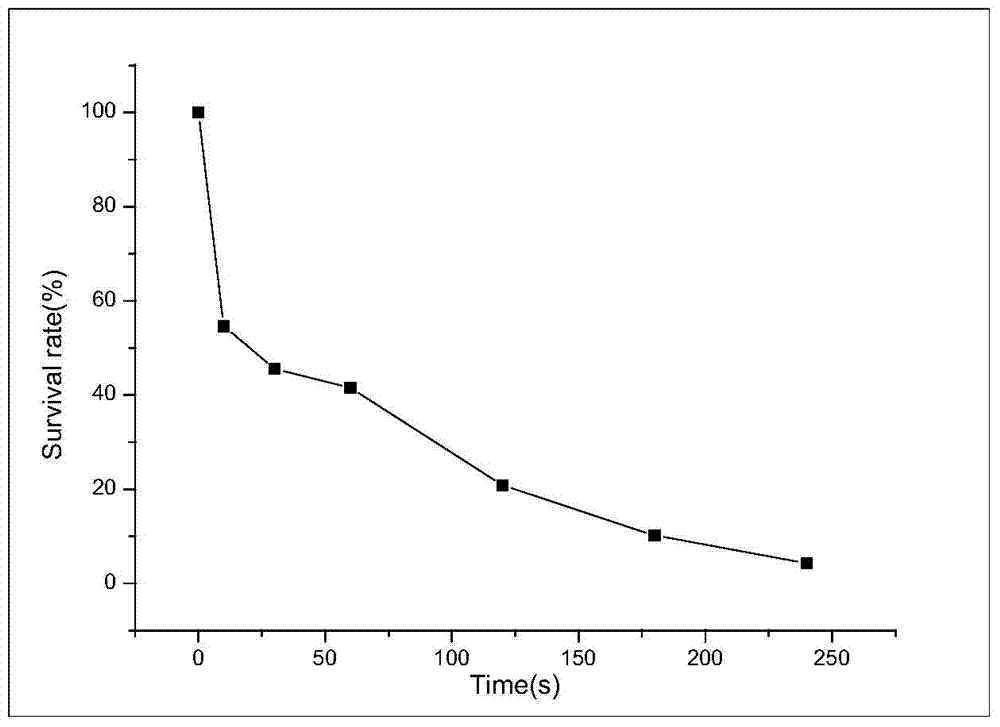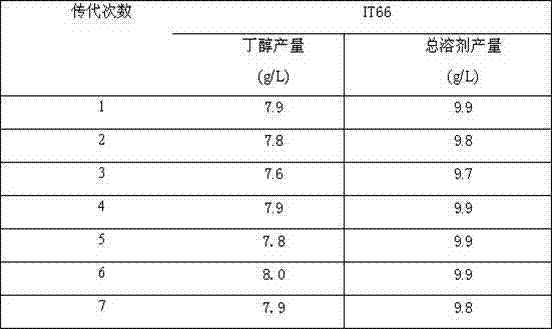Novel strain for producing butanol and method for producing butanol
A technology of butanol and strains, applied in the field of butanol-producing strains, can solve problems such as inability to use fermentation to produce butanol, and achieve the effects of great social significance and economic value
- Summary
- Abstract
- Description
- Claims
- Application Information
AI Technical Summary
Problems solved by technology
Method used
Image
Examples
Embodiment 1
[0040] Example 1: This example illustrates the method for screening Clostridium beinii IT66 by mutagenesis using the original strain IB4 of Clostridium beinii as the starting strain.
[0041] The source of the starting strain: the strain disclosed in the previous literature of the applicant's inventor team, Guo et al. (J Ind Microbiol Biotechnol, 2011, 99 (3), 401-407.). The applicant hereby declares that it guarantees to distribute the biological materials of this starting strain to the public free of charge within 20 years from the date of application.
[0042] The medium formula used in this embodiment (% is mass percentage):
[0043] (1) Solid plate medium: yeast powder 0.3%, peptone 0.5%, soluble starch 1%, ammonium acetate 0.2%, sodium chloride 0.2%, magnesium sulfate heptahydrate 0.3%, potassium dihydrogen phosphate 0.1%, dihydrogen phosphate Potassium 0.1%, ferrous sulfate heptahydrate 0.01%, agar 1.5%, the rest is water, pH 6.
[0044] (2) Resazurin plate medium: ...
Embodiment 2
[0065] Embodiment 2: This embodiment illustrates the method that Clostridium beinii IT66 produces butanol
[0066] The medium formula used in this embodiment:
[0067] Plate medium: yeast powder 0.3%, peptone 0.5%, soluble starch 1%, ammonium acetate 0.2%, sodium chloride 0.2%, magnesium sulfate heptahydrate 0.3%, potassium dihydrogen phosphate 0.1%, dipotassium hydrogen phosphate 0.1%, Ferrous sulfate heptahydrate 0.01%, agar powder 1.5%, the rest is water, pH 6.
[0068] Seed medium: yeast powder 0.3%, peptone 0.5%, soluble starch 1%, ammonium acetate 0.2%, sodium chloride 0.2%, magnesium sulfate heptahydrate 0.3%, potassium dihydrogen phosphate 0.1%, dipotassium hydrogen phosphate 0.1%, Ferrous sulfate heptahydrate 0.01%, the rest is water, pH 6.
[0069] Fermentation medium: non-detoxified corncob acid hydrolysis sugar solution 3%; ammonium acetate 0.22%, potassium dihydrogen phosphate 0.05%, dipotassium hydrogen phosphate 0.05%, magnesium sulfate heptahydrate 0.02%, m...
Embodiment 3
[0076] Embodiment 3: This embodiment illustrates the method that Clostridium beinii IT66 produces butanol
[0077] The medium formula used in this embodiment:
[0078] Plate medium: yeast powder 0.3%, peptone 0.5%, soluble starch 1%, ammonium acetate 0.2%, sodium chloride 0.2%, magnesium sulfate heptahydrate 0.3%, potassium dihydrogen phosphate 0.1%, dipotassium hydrogen phosphate 0.1%, Ferrous sulfate heptahydrate 0.01%, agar powder 1.5%, the rest is water, pH 6.
[0079] Seed medium: yeast powder 0.3%, peptone 0.5%, soluble starch 1%, ammonium acetate 0.2%, sodium chloride 0.2%, magnesium sulfate heptahydrate 0.3%, potassium dihydrogen phosphate 0.1%, dipotassium hydrogen phosphate 0.1%, Ferrous sulfate heptahydrate 0.01%, the rest is water, pH 6.
[0080] Fermentation medium: non-detoxified corncob acid hydrolyzed sugar solution 3.5%; ammonium acetate 0.22%, potassium dihydrogen phosphate 0.05%, dipotassium hydrogen phosphate 0.05%, magnesium sulfate heptahydrate 0.02%,...
PUM
 Login to View More
Login to View More Abstract
Description
Claims
Application Information
 Login to View More
Login to View More - R&D
- Intellectual Property
- Life Sciences
- Materials
- Tech Scout
- Unparalleled Data Quality
- Higher Quality Content
- 60% Fewer Hallucinations
Browse by: Latest US Patents, China's latest patents, Technical Efficacy Thesaurus, Application Domain, Technology Topic, Popular Technical Reports.
© 2025 PatSnap. All rights reserved.Legal|Privacy policy|Modern Slavery Act Transparency Statement|Sitemap|About US| Contact US: help@patsnap.com



